How Rolex Became King: A Brief History of the World’s Most-Renowned Watchmaker
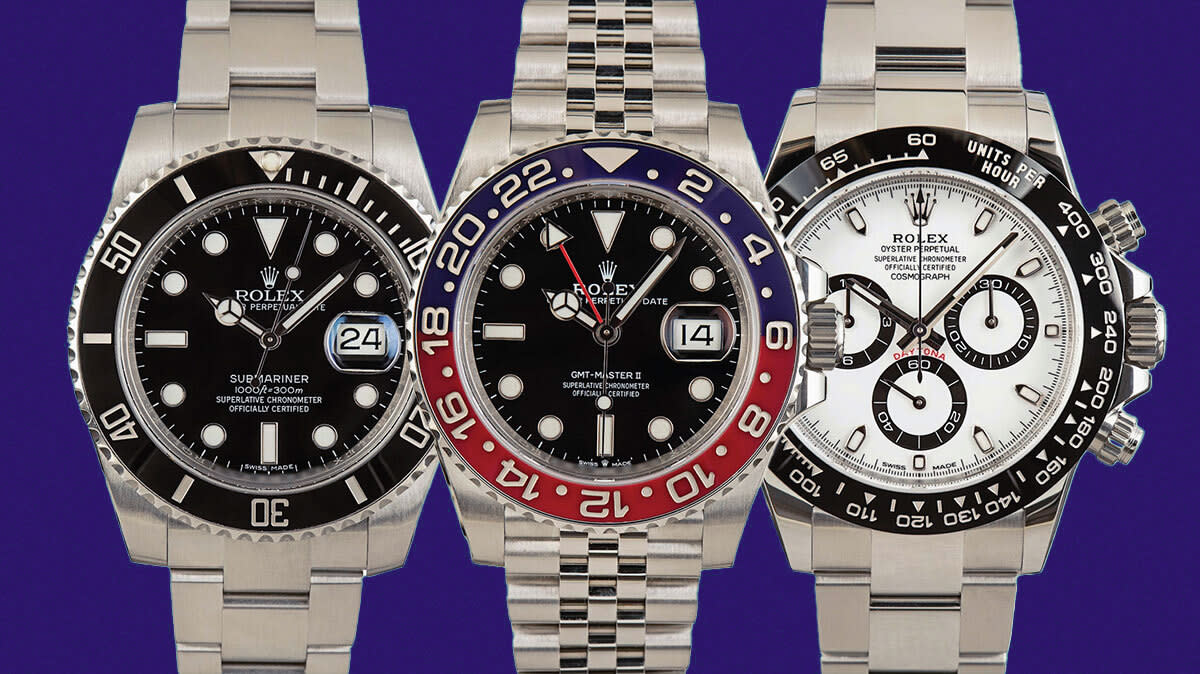
Rolex is the first—and often the only—watch brand people think of when it comes to high-end timepieces. But beyond that instant recognition, Rolex has become a broad cultural touchstone with symbolic meaning and social significance that speaks across cultures.
Mercedes, Gucci and Apple have achieved global status on par with Rolex’s. These brands have rooted themselves so deeply into the global culture that they have come to represent much more than the products they label; they symbolize wealth, success, taste, style and quality. Their cultural prominence has made these companies indefatigable kings of their respective domains.
More from Robb Report
IWC's New N.Y.C. Boutique Is an Espresso Bar That Doubles as a High-Tech Watch Atelier
A Brief History of the Salmon Dial-and Why Yours Probably Isn't One
A $17.3 Million Patek Philippe Minute Repeater Leads Only Watch Auction
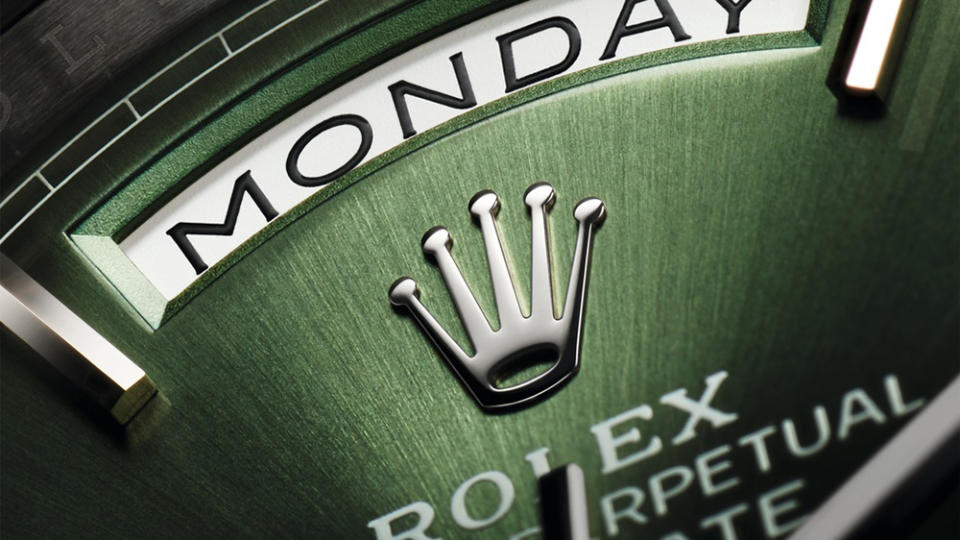
While such powerful branding may be ineffable on some level, it is possible to pinpoint the visionary strategies that put Rolex on the horological throne. Five of those strategies stand out: Rolex’s technical innovation, marketing élan, design consistency, financial independence and selective scarcity have generated the company’s global presence in the hearts and minds of billions of people.
Technical Innovations
In 1905, German-born Hans Wilsdorf and his brother-in-law Alfred Davis set up an eponymous company in London that imported Swiss movements, installed them in British cases and sold them to jewelers who put their own names on the dials. Sensing the potential for their own brand to succeed in the burgeoning wristwatch market, Wilsdorf dreamed up and secured the brand name Rolex in 1908.
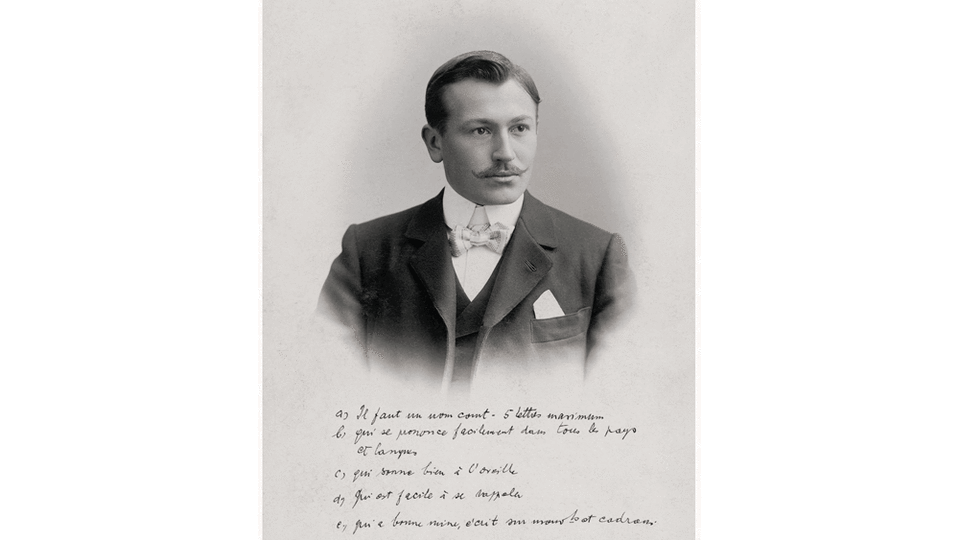
From the beginning, Wilsdorf understood the appeal of precision timekeeping. In 1910, a Rolex became the first wristwatch to carry the Swiss Certificate of Chronometric Precision, bestowed by the Official Watch Rating Centre in Bienne, Switzerland. Recognizing the positive impact this rating had on sales, Wilsdorf secured a “Class A” Precision Certificate from the Kew Observatory in 1914, usually reserved for marine chronometers. This certification resonated with British customers who understood that accurate timekeeping—the solution to the long-standing problem of navigating longitude—had empowered the British Empire to dominate the seas in both combat and commerce. Thus began the convention of offering civilians mechanical accuracy that very few require but many desire. Rolex has offered cutting-edge accuracy ever since.
Demand for Rolex watches rose swiftly, and British taxes on the Swiss movements Rolex used prompted Wilsdorf to relocate the business to Geneva, Switzerland, in 1919. With production costs lowered, Wilsdorf set out to solve the problem of moisture and dust entering the watch case and damaging the movement. The Rolex team came up with a fully sealed watch case, which Wilsdorf dubbed the Oyster, and released it to much fanfare in 1926. During the 1920s this screwed-together device was so innovative that some consumers, who were accustomed to protecting their watches even from rain, were skeptical. It would take some marketing brilliance to convince the general population that the Oyster case was, indeed, waterproof.
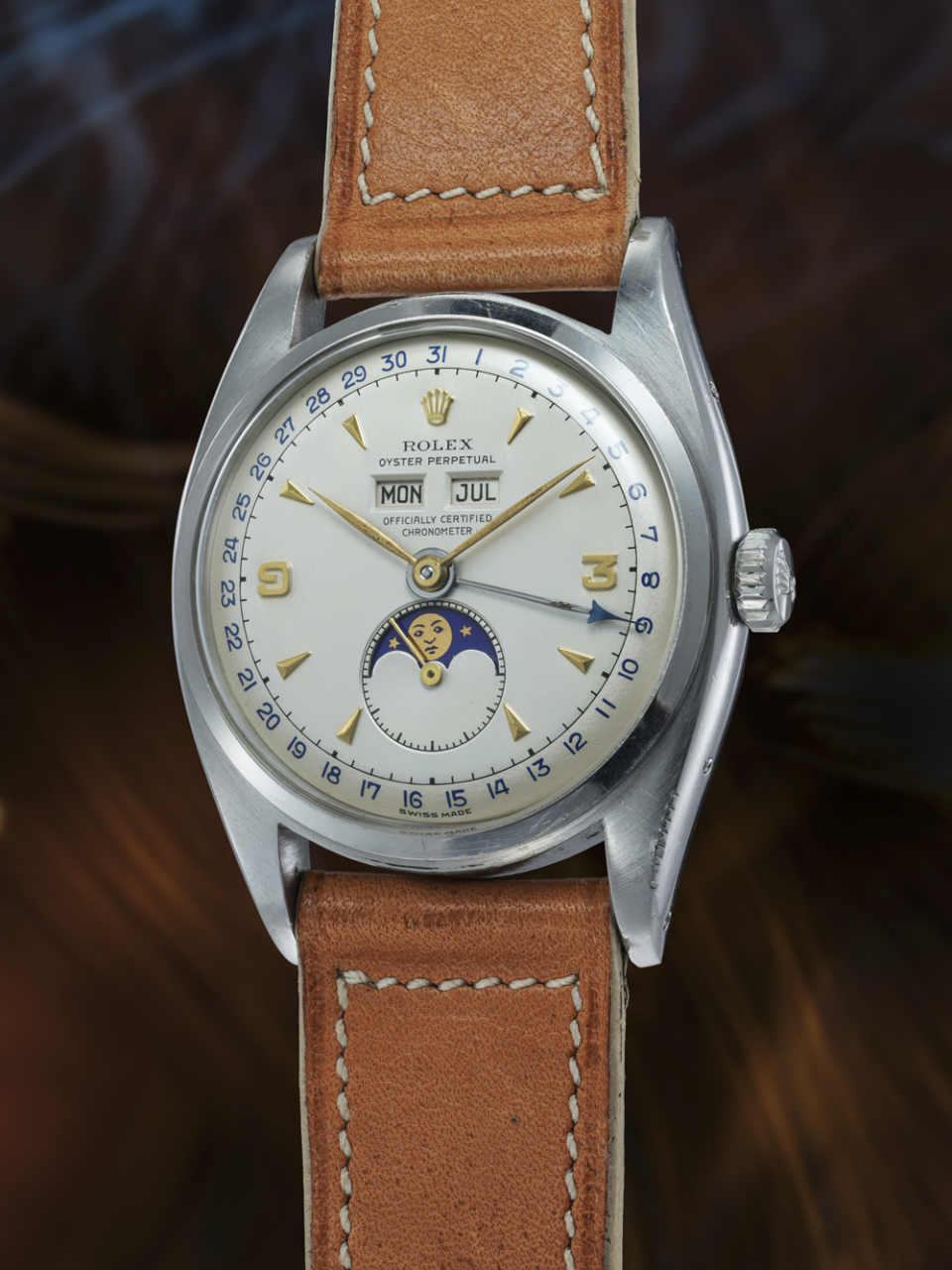
Interestingly, the Oyster case structure is the reason for the fluted bezel found on so many Rolex models today. That bezel was fluted to receive an interlocking tool used to screw the bezel on and off of the mid-case. The caseback was similarly fluted for the same reasons, but like any caseback, it never became a dominant aesthetic cue. For decades, Rolex’s fluted bezels have served no function, and the fluting itself has become gently flared (more like waves than ridges) to the point where, even if one tried, no tool could interlock. As with other technical innovations from Rolex, the visual impact has long outlived its functionality to become a signature of the brand. Witness a professional tennis match, an international airport clock or a Rolex ad today and you’re guaranteed to see that gleaming fluted bezel doing nothing more than gleam. It’s an interesting case of form outliving function.
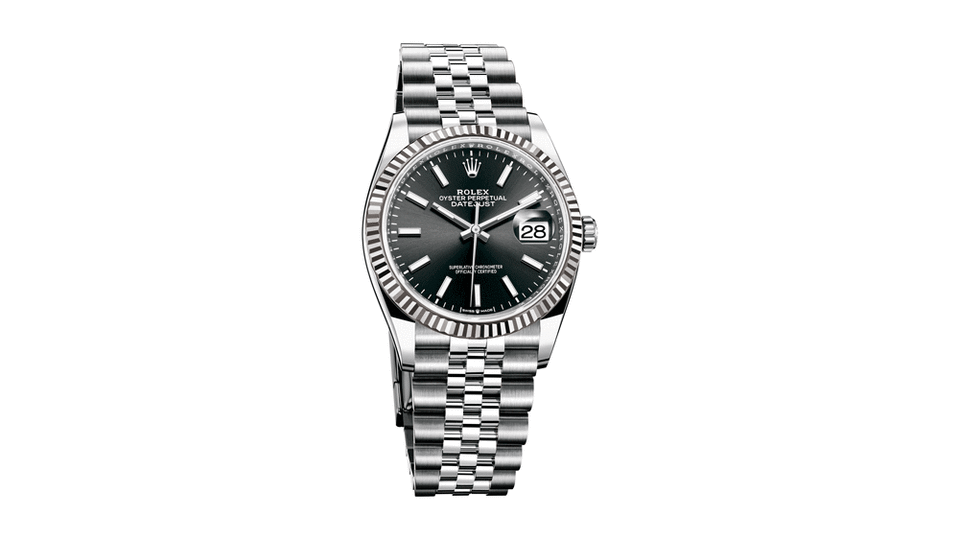
In 1931, Rolex introduced the first automatic winding wristwatch, giving birth to the legendary Oyster Perpetual. The auto-winding movement was a technical marvel that caught people’s attention for its convenience while decreasing wear on the manual winding mechanism and the crown threads, thus reducing service intervals and improving water resistance. It would be hard to overstate the impact of the auto-winder on the entire mechanical-watch industry, and, once again, Rolex was out in front making headlines.
Despite Switzerland’s neutrality, WWII was challenging for the Swiss watch industry, and technological innovations aimed at the civilian market were few. Many watch companies retooled to focus on war contracts, which demanded simple, rugged watches for ground soldiers and pilots. Always the maverick with an eye on the long-game, Rolex only supplied a limited number of watches to the British military and otherwise marched forward with innovations for the civilian market. In 1945, Rolex released the Datejust. The Datejust was the first watch to have the date jump instantaneously at midnight, rather than taking hours to turn over as in most mechanical wristwatches. Legend has it that the name comes from the date jumping just before midnight.
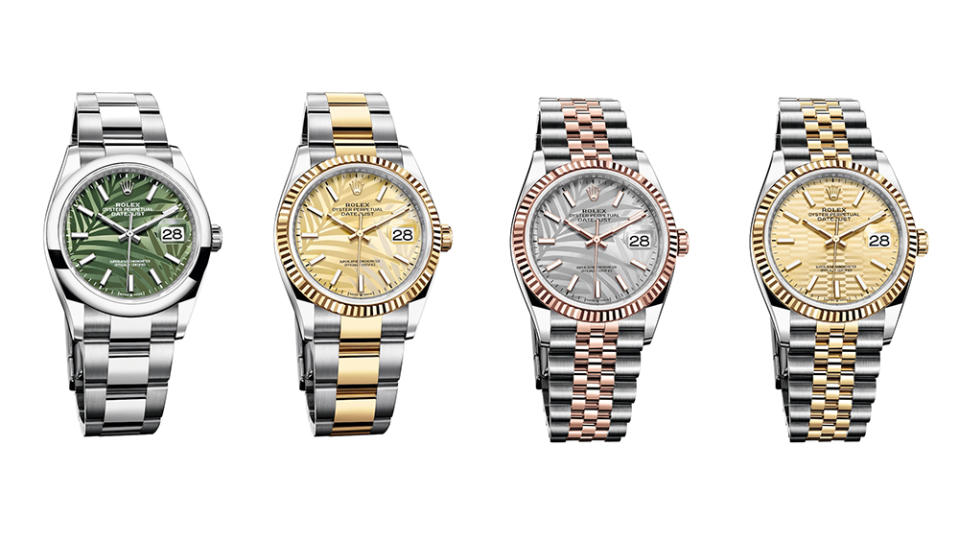
After the war, Rolex was uniquely poised to supply an increasingly affluent civilian market that wanted futuristic products, and the brand found innovations. Rolex secured the patent for the date magnifier, or Cyclops, around 1950, and it appeared for the first time in 1953 on that year’s edition of the Datejust. To this day, no watch is as instantly recognizable as a Rolex with a Cyclops and a fluted bezel, making the Datejust, Day-Date and Sky-Dweller horological icons. By launching the Cyclops on the Datejust, Wilsdorf literally magnified one modernization with the other, a brilliant marketing move that capitalized on his well-honed instinct for titillating his customers with exclusive introductions.
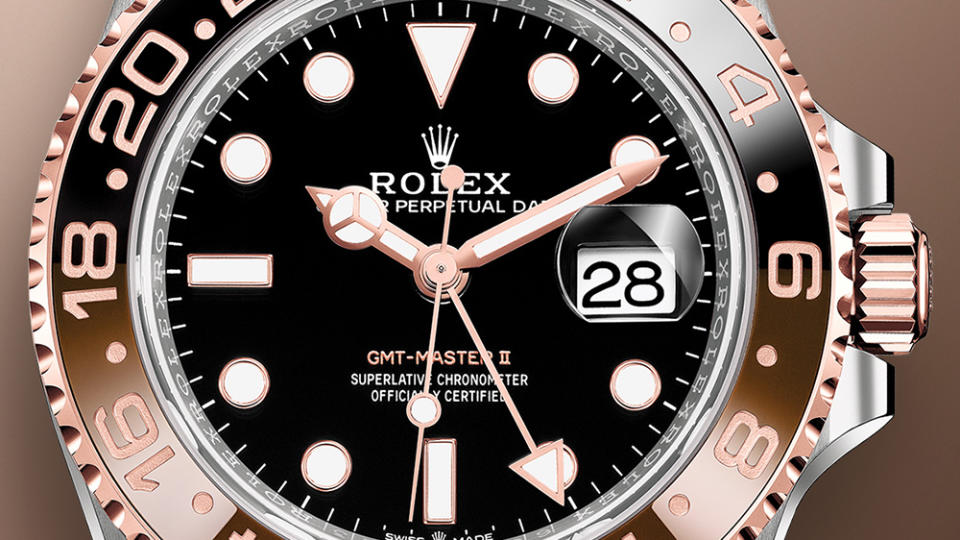
The 1950s were watershed years for Rolex, seeing the release of the Air-King (1958), the Explorer (1953), the Submariner (1953), the GMT Master (1955), the Day-Date (1956), the electromagnetic field resistant Milgauss (1956), the Lady-Datejust (1957) and the first Deep Sea model (1960). With the exception of the Day-Date, which was the first watch to display the weekday and date on the dial, and the GMT Master, which was the first of its kind, Rolex’s postwar offerings were highly compelling configurations of pre-existing technologies. It would be how Wilsdorf marketed these midcentury icons that would put Rolex high up on the horological throne.
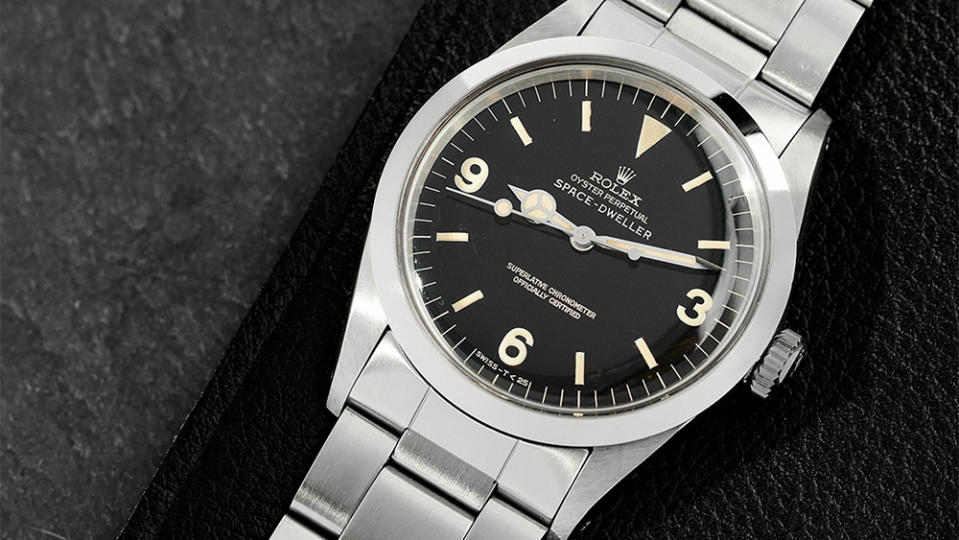
Marketing Innovations
We can’t quite say that Wilsdorf invented the adventurous and athletic brand ambassador. Cartier’s watches adorned the wrists of famous pilots, and Jaeger LeCoultre’s Reverso were hot on the polo circuit. But Wilsdorf would repeatedly make sure his watches were on the wrists of some of the bravest people that accomplished some of the most daring feats of the day. Specifically, Wilsdorf understood that when someone sets a record, they’re going to make the papers, and setting records was a 20th-century obsession. With Rolex’s decidedly rugged, adventure-ready timepieces—which stood in stark contrast to what most watch brands were producing at the time—Wilsdorf could legitimately equip explorers and daredevils with expedition-ready timepieces.
Consumers were still highly skeptical of the Rolex Oyster’s ability to resist water. Wilsdorf put those doubts to rest by submerging Rolex Oysters in aquariums he had set up in the windows of high-traffic department stores such as Harrods, in London, while ads brought images of submerged Oysters to a much broader international customer base.
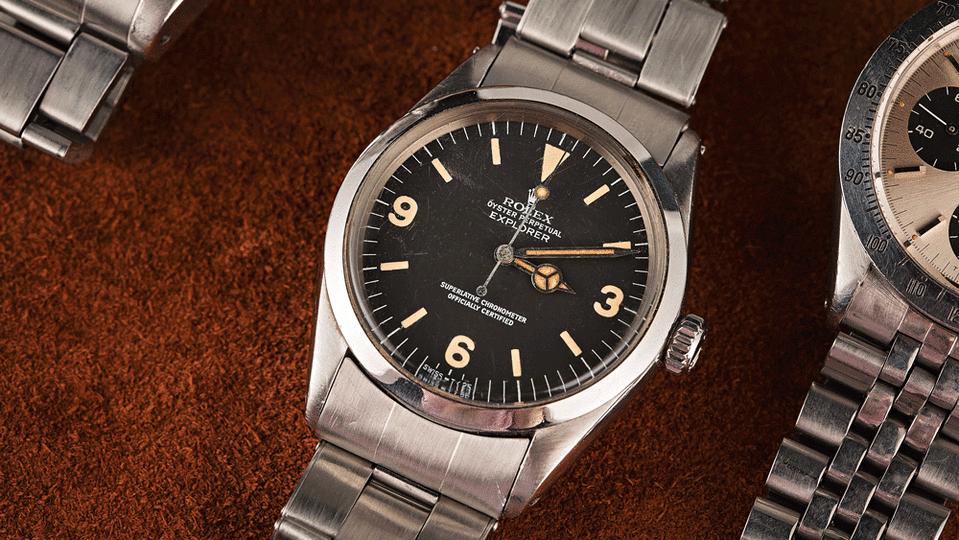
Wilsdorf didn’t stop there. In 1927, Wilsdorf made sure that an Oyster was on Mercedes Gleitze, who swam the English Channel in over 10 hours—but she wore the watch around her neck rather than her wrist. The watch didn’t leak, and that feat made the news by way of another invention from Wilsdorf: an ad he placed in the papers with Gleitze’s testimony about the watch’s performance. Others have imitated the testimony concept to such a degree that it’s no longer in vogue, but Wilsdorf would milk it for decades with excellent results. Below is a list of accomplishments that Rolex attached themselves to and, subsequently, pushed into the public via testimony ads:
1933 – A Rolex flies over Mt. Everest at an altitude exceeding 33,000 feet with the first team to do so, as part of the Houston Expedition.
1935 – A Rolex sets the world record for land speed at 276 mph alongside celebrity driver Sir Malcolm Campbell. A few months later, he would break the 300 mph barrier at Bonneville Salt Flats, Utah.
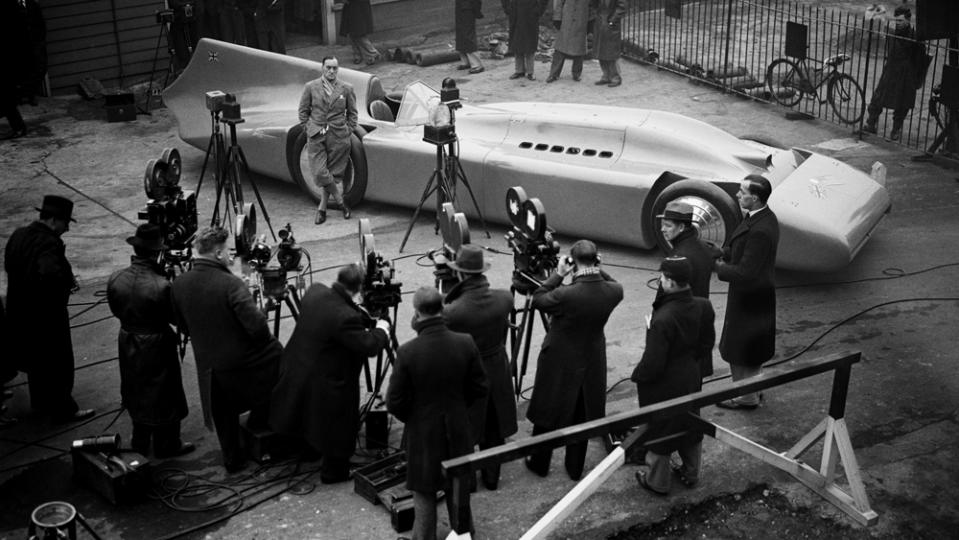
1953 – A Rolex accompanies Sir Edmund Hillary and Tenzing Norgay on the first successful summit of Mt. Everest. Rolex releases a version of that watch called the Explorer in the same year.
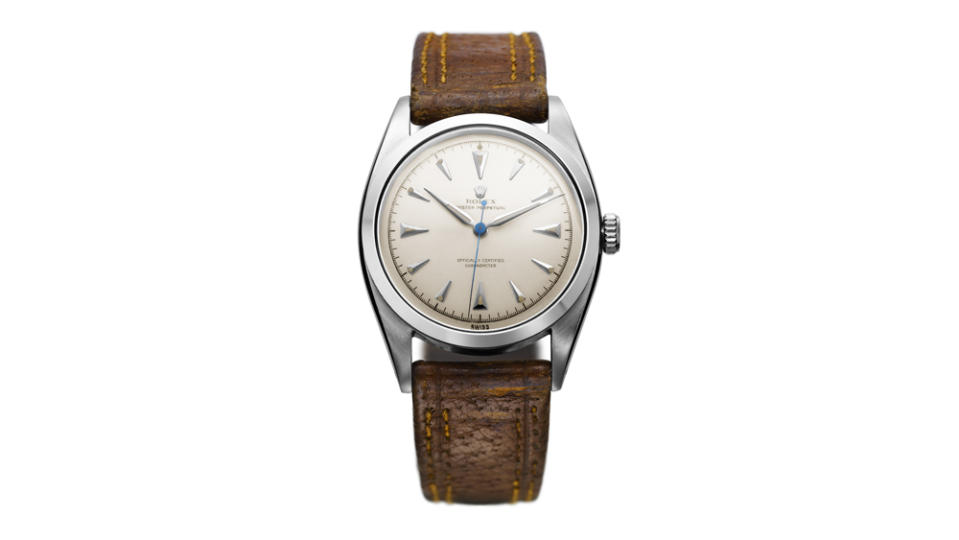
1955 – Rolex watches accompany the first commercial intercontinental flights. Rolex then equips Pan American pilots with GMT Masters.
1956 – US President Lyndon B. Johnson famously sports a Rolex Day-Date, and Rolex advertises heavily around the ensuing association with world leaders.
1956 – The Milgauss is proven to withstand a magnetic field measuring 1000 gauss at the CERN particle accelerator. Ads announcing this were targeted toward engineers and scientists.
1960 – A Rolex Deep Sea Special descends to the bottom of the Mariana Trench aboard the record-setting submarine Trieste, a feat that made the papers worldwide.

1963 – Rolex launches the Cosmograph Daytona, an automotive-specific chronograph, linking the brand interminably with one of the world’s most famous motorways.
The world’s fascination with famous explorers and record-setters began to settle down toward the last quarter of the 20th century. With the race for space slowing down and most corners of the world mapped, the digital age was moving our frontiers into an increasingly virtual realm. Simultaneously, the tools of exploration were becoming digital, leaving mechanical watches to increasingly become anachronistic devices. Rolex shifted gears at this point, focusing on star athlete ambassadors, sporting event sponsorships (particularly tennis, golf, motorsports and yachting), and Rolex upped its role as a benefactor to art and science. A brief overview of these initiatives includes the following:
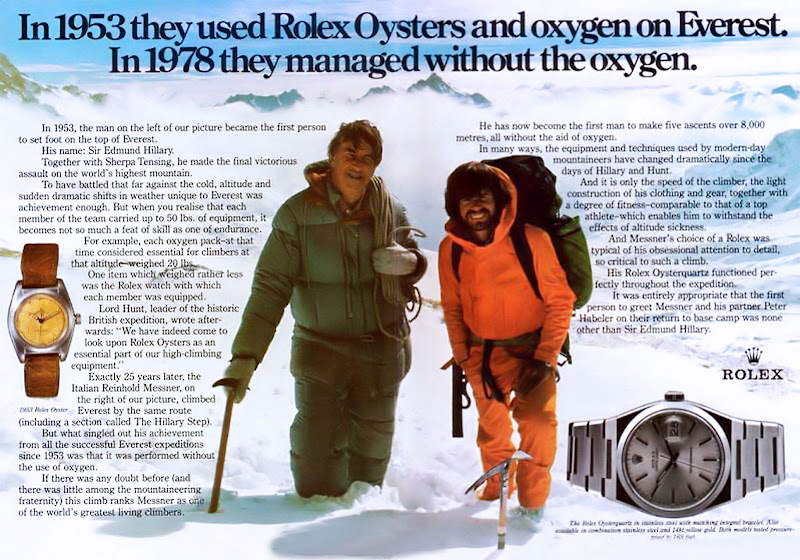
1976 – Celebrating the 50th anniversary of the Oyster, the Rolex Awards for Enterprise program is launched to award individuals who make significant contributions to improving the world in arenas from conservation to health. Rolex explains, “The awards were designed to fill a void in corporate philanthropy by supporting exceptional individuals around the world, pioneers who had no or little access to traditional funding and were responding to major challenges with original and innovative projects that advance human knowledge and well-being.”
1992 – Rolex launches the Yacht-Master and begins sponsoring yacht races that draw worldwide audiences to this day.
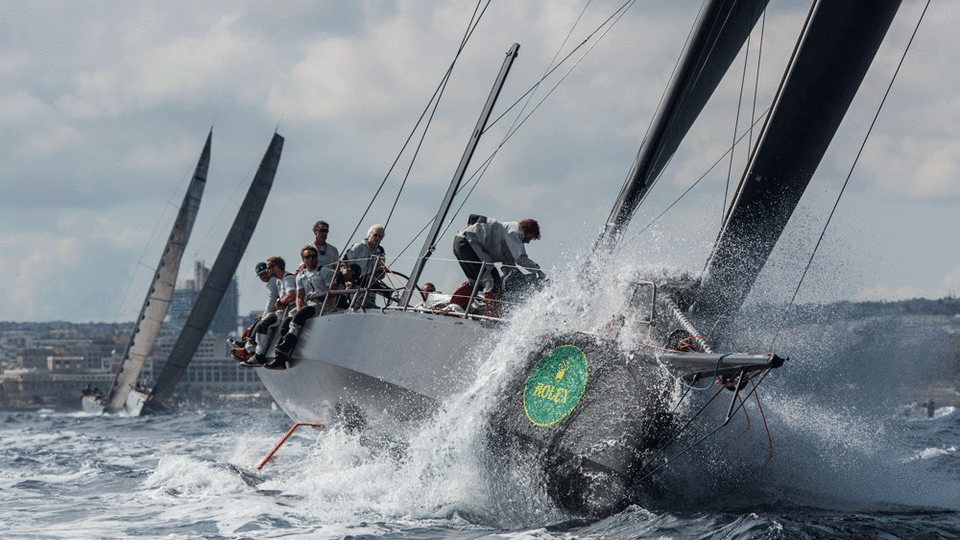
2002 – The Rolex Mentor and Protégé Arts Initiative is initiated, which sponsors creative individuals in the arts, linking Rolex to a wide swath of artists, musicians, performers and architects. The cultural capital of these affiliations has, no doubt, some value for Rolex, but, as we shall explore below, may be more about fulfilling Wilsdorf’s vision for Rolex to become a true corporate benefactor.
Financial Independence & Not-For-Profit Status
It’s often said that a visionary founder or CEO will inevitably clash with conventional boardroom concerns, and some boards have pushed founders out (such as Steve Jobs at Apple, Jack Dorsey at Twitter, Jerry Yang at Yahoo). While we will never know how such a scenario would have played out at Rolex, it’s fair to posit that a visionary and unconventional leader like Wilsdorf was better off working independently. Wilsdorf maintained the freedom to lean into initiatives that, at times, seemed to diminished the importance of the bottom line. This freedom could explain the R&D and manufacturing resources put into some of Rolex’s most extreme watches, such as the first Deep Sea and even the relatively commonplace Daytona, which was a commercial failure for decades. Such initiatives are often hard to reconcile with quarterly shareholder interests, even if one argues for the marketing bump.
What truly sets Wilsdorf apart from so many founders—and what sets Rolex apart from so many corporations—is that upon Wilsdorf’s death in 1960, ownership of Rolex S.A. (a conglomerate of interlinked sub-companies) passed to the Hans Wilsdorf Foundation (founded by Wilsdorf in 1945), the mission of which is simply to sustain Rolex S.A. indefinitely. Under Swiss law, Rolex does not pay taxes on its $4 billion annual revenue, and because the corporate entities are private businesses, Rolex is not required to disclose any financial records. This arrangement makes Rolex’s business practices entirely opaque, yet it seems clear that Rolex’s contributions to its various charitable outlets (the aforementioned Awards for Enterprise and Mentor and Protégé Arts Initiative) are significant. Both of those charities are managed by the Rolex Institute, a kind of parent charity that—assuming it is like most other not-for-profits—likely holds a significant endowment into which some portion of that $4 billion in revenue must go. Operational and development expenses would, of course, eat up a significant portion of the annual revenue as well.

Speculation aside, Rolex is uniquely positioned to do nothing more than sustain itself how it sees fit. There is no mandate to grow market share or to increase profits, and certainly, the company’s vision looks far afield of the current financial quarter. By setting up his legacy this way, Wilsdorf’s esoteric entrepreneurial spirit has outlived him, resulting in two business practices that would surely irk quarterly focused investors: ignoring trends and shorting supply.
Design Consistency
Rolex is renowned for making only incremental and conservative changes to their watch designs, and the aesthetics have remained remarkably consistent. One could argue that Rolex’s 20th-century designs set such an enduring aesthetic standard that Rolex simply never needed to change things up. One could also argue that, because mechanical wristwatches have been categorically anachronistic for about five decades, the unchanged look of Rolex watches has played perfectly into the rising trend toward retro-styled timepieces. However, a look at any other watch brand tells us that Rolex’s strict adherence to their design legacy is unique among mass producers of watches.

Blancpain, which actually issued the first dive watch, the Fifty Fathoms, one year ahead of Rolex, changed up its design according to the trends of the 1970s—a move that eventually shrunk Blancpain’s stature in the dive watch market to the point where the model was dropped from the catalog. In 2007, Blancpain revived the Fifty Fathoms in its original form, and these retro-styled models have now become a catalog staple. Audemars Piguet issued the Royal Oak in the 1970s, setting off a trend for luxurious steel sports watches that saw traditionalists like IWC and Patek Philippe chasing down this emerging market, with the Ingenieur and the Nautilus, respectively. Rolex responded by upping production of the Submariner, GMT Master and Daytona, but adhered to only making incremental mechanical improvements and modest tweaks to the original designs. Trends in dress watches began shifting rapidly in the 1990s, and Rolex did nearly nothing to respond, keeping most models as recognizable as ever.
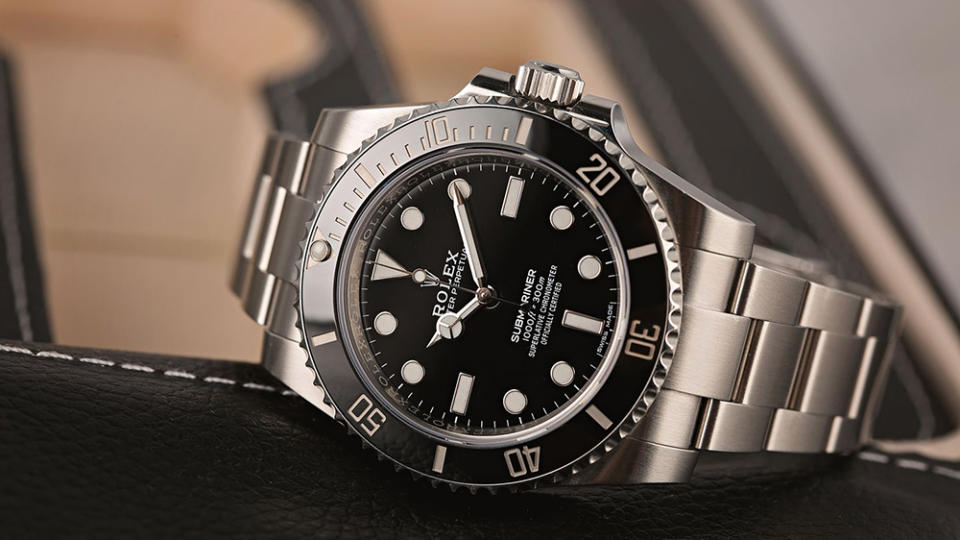
The Cellini line remained an exception within the Rolex catalog, seeing a great deal of avant-garde designs come and go over the years, especially for women’s models. Yet the Cellini line remained Rolex’s least celebrated, least recognizable and least collectible (with the exception of the vintage Ref. 6062 and 8171, both triple calendars with moon phases, that command top dollar at auction). And in 2023, Rolex axed the Cellini line and replaced it with the 1908 line of classic dress watches. We can say the same for Rolex Oysterquartz models, which appeared in the 1970s. Whenever Rolex followed a trend, they produced relatively forgettable watches. When Rolex stuck to their core designs, they made what have become some of the most collectible and popular timepieces. This is especially true of Rolex’s steel professional models, which were produced in relatively low quantities and—despite their ever-rising popularity—remained scarce.
Selective Scarcity
Perhaps the scarcity of classic Rolex steel professional models on the vintage market has inspired Rolex’s current practice of shorting demand for the modern versions. Or perhaps Rolex, like most luxury brands, is using scarcity to build an aura of exclusivity around their brand. Whatever the thinking, Rolex boutiques are bereft of specific steel versions of their professional models, namely the GMT Master, Submariner, Deep Sea, Explorer II, Sky-Dweller, the Yacht-Master I & II and especially the Daytona—but you’ll have an equally difficult time getting just about any watch from a Rolex dealer without joining a waiting list. The Explorer I and Air-King—often called entry-level Rolexes—are comparatively easy to get, and yet still difficult to find.

In short, Rolex now privileges their most loyal customers (read: those who spend the most), while a newcomer will most likely never get the call. It’s a psychology trick straight out of the Ferrari playbook, and it has only made Rolex that much more desirable among people of all kinds around the world.
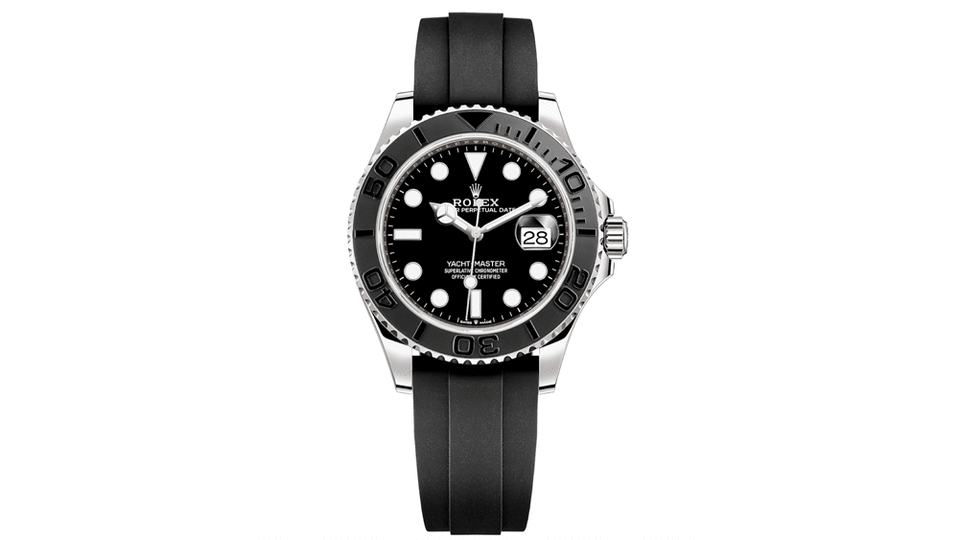
It is ironic that Rolex has managed to create the air of exclusivity and luxury around watches that originally had the air of utility; these were tool watches that no well-dressed person in the 1950s and ’60s would wear outside of the job scenario for which these watches were created. It would have been solid-gold Day-Dates and Datejusts that went with a suit or evening gown. The irony mushrooms, as many watch aficionados express boredom with expensive gold Rolexes while heralding anyone who can obtain, say, a recent GMT Master in steel.
The other result of Rolex shorting the market for their steel professional models has been escalating prices on the secondary market. Flipping these watches is a faux pas with authorized dealers, who vet their customers as best they can to weed out flippers. It’s even been said that some watch collectors brag about having paid retail at their dealer. Such a claim would cast these folks in an exclusive light among the right crowd.
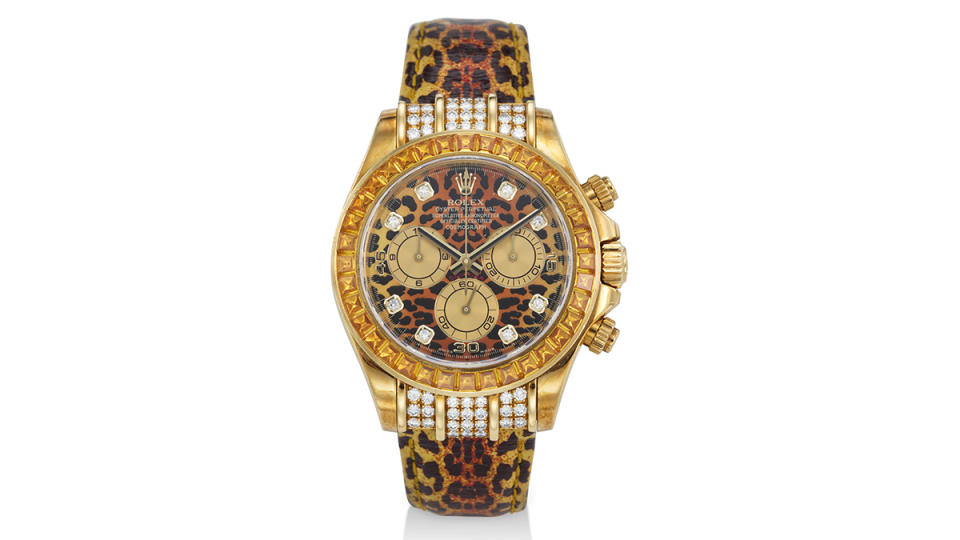
Clearly shorting this market has been working for Rolex, who could certainly bump up production of these models and sell them like hotcakes. But anyone who has walked into an authorized Rolex dealer and asked if they could get a steel Sky-Dweller or GMT Master will experience the ineffable aura of exclusivity that this practice wraps around the retail experience. Further, Rolex fans commiserating about the “unobtainium” watches generates a street-level buzz that most brands only dream of.
It’s hard to imagine that Rolex could get away with not meeting market demand if they were solely beholden to quarterly profits. Wilsdorf’s visionary long-game lives on in this practice, which seems to perfectly embody his innovative methods of generating buzz at any cost. Simultaneously, Rolex’s commitment to its original designs seems to have assured that Rolex watches will never go out of style, even as new materials and technologies slowly make their way into new models. Being eternally in vogue, more than anything, has assured that Rolex will remain king for the foreseeable future.
Best of Robb Report
Sign up for Robb Report's Newsletter. For the latest news, follow us on Facebook, Twitter, and Instagram.
